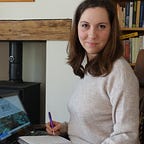Soya: The True Cost to the Amazon Rainforest
As more and more people turn towards vegetarianism or veganism, soya is becoming an increasingly popular meat alternative and a standard product on supermarket shelves. Due to environmental concerns, many people have made the switch — beef is one of the most environmentally unfriendly products globally — but soya may not be that much better. The bean has been linked to increased deforestation, reduced biodiversity, carbon emissions and soil erosion. But how can a plant cause so much destruction?
Brazil is one of the largest soya producers in the world. According to an International Grains Council report, the country will produce 139 million metric tons of soya beans this year. Unfortunately, all this farming comes at a cost — mainly to the Amazon Rainforest, one of the Earth’s most essential (and endangered) habitats. Evidence suggests that the planet’s health is closely linked to the health of the Amazon, and as the Amazon faces deforestation, it is having a knock-on effect on the rest of the world.
Deforestation
Worldwide, the amount of land used for soya cultivation takes up the same space as France, Germany, the Netherlands, and Belgium, and it continues to grow. In 2018 alone, 57 million hectares of rainforest were cleared.
Soya only bears once per lifetime and does not react to fertiliser. The result: soya farmers need to clear vast swathes of land to grow enough of the crop. As demand for the bean increases, more space is required.
Reduced Biodiversity
As deforestation continues, habitats are lost, and animals and plants have less space to live. This is not sustainable for their long-term survival, and they are increasingly threatened with extinction.
While this is happening at an alarming rate in the Amazon, the Cerrado Basin (Brazil’s tropical savannah) has suffered the most. Nearly half of the savannah has been cleared for soya farming. Research predicts that if this continues at its current pace, the savannah land and its inhabitants would largely disappear by 2050.
Carbon Emissions
Plants are one of the best means of reducing the amount of carbon dioxide in the atmosphere. For example, the Amazon Rainforest holds 76 billion tonnes of carbon dioxide, equal to 21 years worth of Europe’s annual carbon emissions. But the ongoing deforestation means the Amazon is unable to absorb the same amount.
Added to this are the carbon emissions from tractors and other farming machines used to harvest and process the bean and the vehicles used to export the product. Without the Amazon absorbing carbon dioxide at the same rate it once did, carbon dioxide levels continue to rise.
Soil Erosion
Brazil loses approximately 55 million tons of topsoil each year to soya cultivation due to over-farming and deforestation.
The result of deforestation on the rainforest soil is well-documented. Without any plant roots holding the soil together, it becomes increasingly vulnerable to wind disturbance.
Despite the rainforest’s verdant image, the soil quality is relatively poor and deforested areas become even more so without any added nutrients from decaying organic material. This is compounded by soya farmers over-ploughing and irrigating the topsoil, and as the soil loses its nutrients, farmers clear new land.
Strained Water Resources
Soya needs large quantities of water to grow, but farmers do not always use the available water sustainably. This has led to depleted underground water supplies and an increasing need to take water from elsewhere. Furthermore, the long-term use of farming equipment slowly compacts the soil, making it harder for water to permeate the ground and refill these water supplies.
The misuse of agrochemicals, such as pesticides, has led to the contamination of nearby water sources, harming the native wildlife and causing health problems in the surrounding communities.
What’s Being Done?
In 2006, under pressure from Greenpeace, a group of traders signed Brazil’s Amazon Soya Moratorium (ASM), under which they agreed to refrain from buying soya beans grown on land deforested after 2008. The agreement was renewed every one or two years until 2016, when it was extended “indefinitely”.
The ASM has widely been considered a success. Before the agreement, 30% of all deforestation could be linked to soya farming; this reduced to only 2% in 2018–19. Conservation groups, such as the WWF, are now recommending the ASM be extended to cover the Cerrado Basin as well.
Several other schemes promote sustainable soya production, like the Round Table on Responsible Soy and the ProTerra Foundation. Both initiatives include soya producers, retailers, and civil society organisations committed to promoting sustainable growth and trade across the globe.
These groups have been particularly beneficial to food companies. In response to growing concern over the environmental impact of soya, they are increasingly looking to source their products from sustainable sources.
What Can We Do?
Surprisingly what we can do is go vegetarian or vegan. This is because only 6% of all soya bean production goes straight into foods for human consumption; most becomes animal feed.But if you are not ready to give up meat altogether, even reducing your beef consumption to once or twice a week can lower your carbon footprint by up to 79%.
We don’t even need to give up soya, but rather ensure we buy soya products from sustainable sources. In 2016, the WWF published a “scorecard” detailing the percentage of certified sustainable soya products sold in several British supermarket chains. Waitrose and Marks and Spencer came out on top with 65% and 52% respectively.
All in all, eating soya is one of the easiest things we can do to reduce our carbon footprint. But, maybe we need to be more careful about the origins of our soya products to help save the Amazon and its vital importance to the health of our planet.
